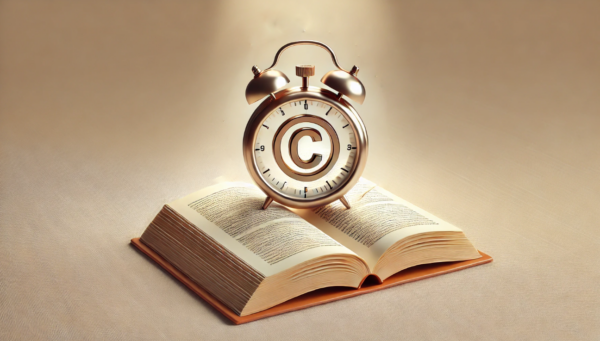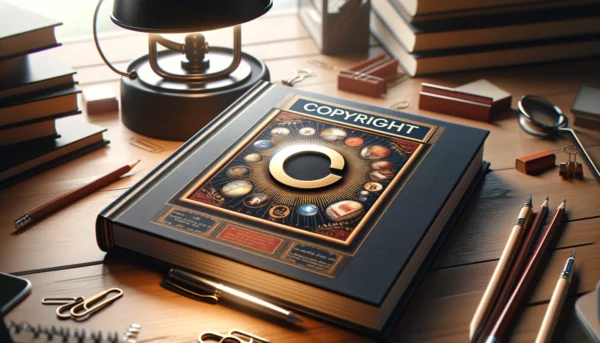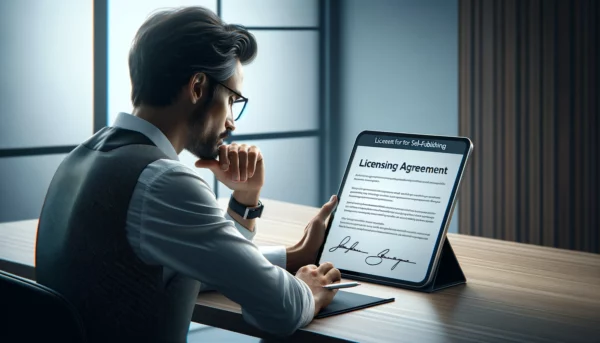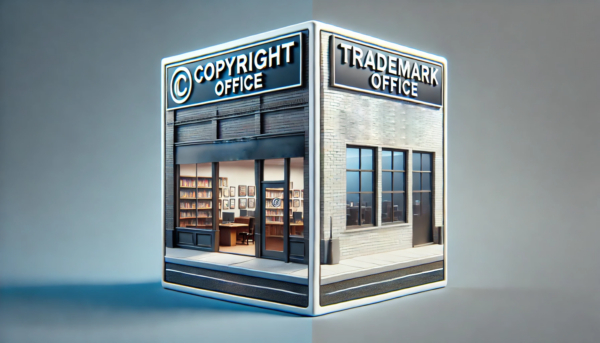You’ve spent countless hours crafting your manuscript—every word, sentence, and idea is uniquely yours. But without a copyright page in a book, your work is left unprotected. This essential page ensures the copyright holder is properly credited while safeguarding your intellectual property from unauthorized use.
For many self-published and traditionally published authors, the copyright page in a book can seem like a complex mix of legal terms and formatting rules. However, it plays a crucial role by establishing ownership, outlining legal rights, and providing key publishing details. Knowing where the copyright page goes in a book and how to format it correctly can prevent future legal issues.
In this guide, we’ll break down what a copyright page in a book is, provide copyright page examples, and show you how to create one that protects your work. Plus, platforms like Spines make copyright protection simple and affordable, so you can focus on what matters most—writing.
Your Publishing Journey Awaits – Start NowWhat Is a Book Copyright Page?
A book copyright page is typically located on the back of the title page and serves as the legal backbone of your book. It provides critical information about the ownership of the book’s content, legal disclaimers, publishing details, and permissions.
Key Elements of a Copyright Page:
- Copyright Notice: The © symbol, the publication year, and the copyright holder’s name.
- Rights Reserved Notice: A statement reserving the author’s rights to the work.
- Edition Information: Details like “First Edition” or “Second Edition.”
- ISBN and Cataloging Information: International Standard Book Number (ISBN) and Library of Congress Control Number (LCCN).
- Disclaimers: Statements clarifying the use of fictional characters or events.
- Permissions Notice: Information on how to request permission for content use.
- Publisher Information: Publishing company details, printer’s key, and printing history.
- Registration with U.S. Copyright Office: Registering your book with the U.S. Copyright Office provides added legal protection. Copyright holders benefit from this registration, especially in cases of copyright infringement, as it offers significant legal advantages and is time-sensitive.
Understanding these elements ensures your work is not only professionally presented but legally protected.
Why the Copyright Page Matters: Protecting Your Work
Your words are your intellectual property, and the copyright page is a vital tool to protect them.
Legal Safeguard: By including a clear copyright notice, you assert your ownership over the work and legally protect it under U.S. copyright law. This page deters unauthorized use, reproduction, or distribution of your book.
Prevention of Copyright Infringement: A complete and accurate copyright page makes it easier to defend against infringement. Without it, proving ownership in legal disputes becomes far more challenging.
Professionalism and Credibility: A well-crafted copyright page signals professionalism to readers, publishers, and distributors. It shows that you take your work—and your rights—seriously.
Key Components of a Copyright Page
1. Copyright Notice
The standard format is:
© [Year] [Author/Publisher Name]. All rights reserved.
Example:
© 2025 Jane Doe. All rights reserved.
This notice informs readers and publishers that the work is legally protected.
1. Copyright Notice
A copyright notice is a crucial element of a copyright page, as it declares the ownership of the intellectual property. It typically includes the copyright symbol (©), the year of publication, and the name of the copyright owner. The copyright notice serves as a formal declaration of ownership and is essential for protecting the author’s rights. Including a copyright notice on the copyright page ensures that the author’s work is protected under copyright law. For example, a standard copyright notice might look like this: © 2025 Jane Doe. All rights reserved. This simple yet powerful statement helps safeguard your creative work from unauthorized use.
2. Rights Reserved Notice
Typically states:
“All rights reserved. No part of this publication may be reproduced, stored in a retrieval system, or transmitted in any form or by any means without prior written permission from the publisher.”
3. Edition and Publication Information
Example: First Edition, January 202, or Second Edition, Revised March 2025.
4. ISBN and Library of Congress Data
Including the ISBN and Library of Congress Control Number (LCCN) aids in cataloging and distribution.
5. Disclaimers
Fiction works should include a disclaimer like:
“This is a work of fiction. Any resemblance to actual persons, living or dead, is purely coincidental.”
6. Permissions Notice
Clarify how others can obtain permission to use portions of your work:
“For permission requests, contact [Publisher/Author Email or Address].”
7. Credits and Acknowledgments
Credits and acknowledgments are an essential part of a copyright page, as they provide an opportunity to recognize the contributions of others to the book. This section can include credits for editors, designers, illustrators, and other contributors who have played a significant role in the creation of the book.
It’s also a good practice to acknowledge any permissions or licenses obtained for the use of copyrighted materials. By including credits and acknowledgments, authors can demonstrate their appreciation for the support and contributions of others and maintain transparency about the creation of their work. For instance, you might write: “Cover design by John Smith. Illustrations by Jane Doe. Special thanks to XYZ Publishing for their support.”
8. Publisher Information and Printer’s Key
Details about your publishing company or self-publishing imprint and the print run history. Establishing your own publishing company can offer significant advantages, such as listing the company as the copyright owner on copyright pages and providing legal protections.
How to Create a Copyright Page (Step-by-Step Guide)
Step 1: Start with the Copyright Notice
Include the © symbol, year of publication, and your name or your publishing company’s name.
Step 2: Add the Rights Reserved Notice
This formally prevents unauthorized reproduction.
Step 3: Include Edition and Publication Information
Clarify whether it’s the first edition, revised edition, etc.
Step 4: Add Disclaimers
Include necessary disclaimers to protect against legal issues, especially for fiction.
Step 5: Provide Permission to Contact Information
Let readers know how to request permission to use it.
Step 6: Insert ISBN and Library of Congress Data
Ensure proper cataloging for libraries and retailers.
Step 7: Finalize with Publisher Info and Printer’s Key
Include details about your publishing house or self-publishing imprint.

Special Considerations for Self-Published Authors
Self-published authors wear many hats, and legal protection should be a top priority for any self-published book. Unlike traditionally published authors, self-publishers must handle every aspect of copyright protection themselves.
Why It’s Crucial:
- As a self-publisher, you are responsible for registering your work with the United States Copyright Office.
- You need to establish your own publishing company or imprint.
- Without a well-crafted copyright page, you risk losing control over your work.
Spines simplifies this by automatically issuing a copyright protection certificate—saving you time and money.
Ensuring eReader Compatibility
Ensuring eReader compatibility is crucial for self-published authors who want to reach a wider audience. To ensure that eReaders don’t skip the copyright page, authors can use formatting software like Atticus, which allows them to customize the start page of their book. This software inserts a special code into the eBook file that lets readers know exactly where to open the book. By using formatting software, authors can ensure that their copyright page is displayed correctly on eReaders and that their work is protected under copyright law. This step is particularly important for self-published books, as it helps maintain the integrity of the copyright notice and other legal information across different reading platforms.
Common Mistakes to Avoid on a Copyright Page
- Forgetting the Copyright Notice: This leaves your work unprotected.
- Incorrect Rights Reserved Language: Ensure legal clarity.
- Missing ISBN or LCCN: Essential for cataloging and distribution.
- No Disclaimers: This can lead to legal complications for fiction writers.
Do You Need an Intellectual Property Attorney?
While many authors can manage their copyright pages independently, complex works may require legal guidance.
When to Consult a Lawyer:
- Using copyrighted images, music, or texts.
- Publishing controversial or sensitive content.
- Creating derivative works or collaborations.
An intellectual property attorney ensures your copyright page covers all legal bases.
Traditional Publishing vs. Self-Publishing: Copyright Differences
Traditional Publishing:
- In a traditionally published book, the publisher handles copyright registration.
- The professional legal team manages permissions and rights.
Self-Publishing:
- You manage everything—from registration to legal disclaimers.
- Greater creative control but more responsibility. Traditionally published books often include detailed publisher information, which helps readers to contact the publisher and order more books.
Registering Your Book with the U.S. Copyright Office
Registering a book with the U.S. Copyright Office is an essential step for authors who want to protect their intellectual property. While registration is not mandatory, it provides additional protection and benefits, such as the ability to claim attorney fees and statutory damages in case of infringement. To register a book, authors need to submit a completed application form and a copy of the work they’re registering. The registration process can take several months, but it’s a crucial step in protecting the author’s rights and ensuring that their work is protected under copyright law. By registering your book, you gain a stronger legal standing, making it easier to enforce your rights and seek remedies if your work is infringed upon.
Safeguard Your Work with a Solid Copyright Page
Your book is more than just words on a page—it’s your intellectual property. A professionally crafted copyright page not only protects your work legally but also establishes your credibility as an author.
Don’t let the complexity of copyright laws hold you back. With Spines, protecting your creative work is seamless and stress-free. From automatic copyright certificates to easy-to-use templates, Spines ensures that your intellectual property is fully protected—allowing you to focus on bringing your stories to life.
Ready to secure your work and publish with confidence? Get Started with Spines Today!
Your Publishing Journey Awaits – Start NowFAQs – Book Copyright Page
Q: How do you obtain a copyright certificate?
To obtain a copyright certificate, you must submit an application to the U.S. Copyright Office (or the relevant agency in your country). This typically includes:
- A completed application form (online or paper submission).
- A copy of the work you want to copyright.
- The required filing fee (which varies based on type and submission method).
Once submitted, processing can take several months, but you’ll receive an official certificate confirming your copyright registration.
Q: How do you show proof of copyright?
Proof of copyright can be established through registration with a copyright office, adding a copyright notice (© [Year] [Author’s Name]), or keeping dated records of your work’s creation. If you haven’t registered, you can still prove ownership with timestamps, drafts, and any public records of your work. However, formal registration is the strongest proof of copyright in legal disputes.
Q: How much does a copyright license cost?
The cost of a copyright license varies depending on the work type and jurisdiction. In the U.S., basic copyright registration fees range from $45 to $65 for electronic submissions. Licensing fees for commercial use, such as music or branding, vary widely depending on the rights involved. Some licensing options may be free under Creative Commons or public domain rules.
Q: Can you copyright a work without registering it?
Yes, copyright protection is automatic once a work is created and fixed in a tangible form (e.g., written, recorded, or published). However, formal registration provides legal advantages, such as the ability to sue for infringement and claim statutory damages. Without registration, enforcing your copyright in court may be more difficult.
Q: How long does a copyright last?
In most countries, copyright lasts for the author’s lifetime plus 70 years. For corporate or anonymous works, the duration is typically 95 years from publication or 120 years from creation, whichever is shorter. However, rules may vary by country, so checking with the relevant copyright office is recommended.
Q: What is the difference between a copyright and a trademark?
Copyright protects original works like books, music, films, and art, preventing others from copying or distributing them without permission. Trademarks protect brand names, logos, and slogans used in commerce. While copyrights safeguard creative content, trademarks ensure brand identity and consumer recognition in the marketplace.
Q: Is it worth registering a copyright?
Yes, registering your copyright adds legal protection, making it easier to enforce ownership and claim damages if infringement occurs. It’s especially valuable for authors, musicians, and business owners looking to monetize and protect their intellectual property. Without registration, proving ownership in a dispute can be more challenging.








